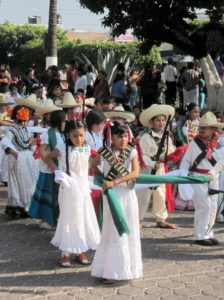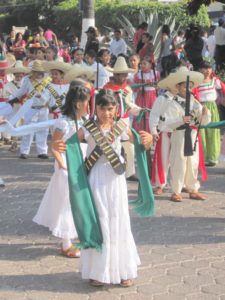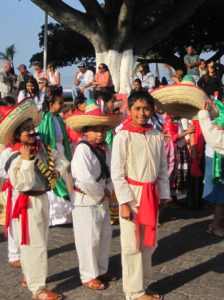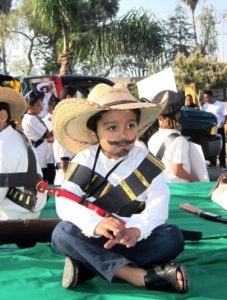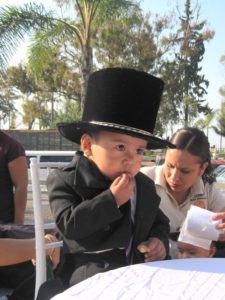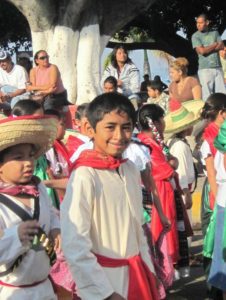The Mexican Revolution was brought on by, among other factors, tremendous disagreement among the Mexican people over the dictatorship of President Porfirio Díaz, who, all told, stayed in office for thirty-one years. During that span, power was concentrated in the hands of a select few; the people had no power to express their opinions or select their public officials. Wealth was likewise concentrated in the hands of the few, and injustice was everywhere, in the cities and the countryside alike.
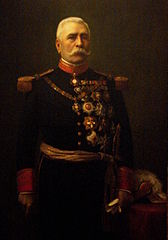
© El Agora, 2007
Early in the 20th Century, a new generation of young leaders arose who wanted to participate in the political life of their country, but they were denied the opportunity by the officials who were already entrenched in power and who were not about to give it up. This group of young leaders believed that they could assume their proper role in Mexican politics once President Díaz announced publicly that Mexico was ready for democracy. Although the Mexican Constitution called for public election and other institutions of democracy, Díaz and his supporters used their political and economic resources to stay in power indefinitely.
Francisco I. Madero was one of the strongest believers that President Díaz should renounce his power and not seek re-election. Together with other young reformers, Madero created the ”Anti-reeleccionista” Party, which he represented in subsequent presidential elections. Between elections, Madero travelled throughout the country, campaigning for his ideas.
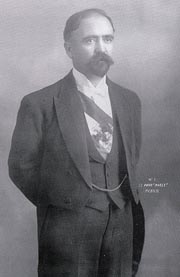
Francisco I. Madero was a firm supporter of democracy and of making government subject to the strict limits of the law, and the success of Madero’s movement made him a threat in the eyes of President Díaz. Shortly before the elections of 1910, Madero was apprehended in Monterrey and imprisoned in San Luis Potosí. Learning of Díaz’s re-election, Madero fled to the United States in October of 1910. In exile, he issued the ”Plan of San Luis,” a manifesto which declared that the elections had been a fraud and that he would not recognize Porfirio Díaz as the legitimate President of the Republic.
Instead, Madero make the daring move of declaring himself President Pro-Temp until new elections could be held. Madero promised to return all land which had been confiscated from the peasants, and he called for universal voting rights and for a limit of one term for the president. Madero’s call for an uprising on November 20th, 1910, marked the beginning of the Mexican Revolution.
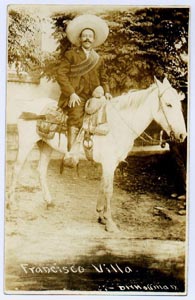
On November 14th, in Cuchillo Parado in the state of Chihuahua, Toribio Ortega and a small group of followers took up arms. On the 18th in Puebla, Diaz’s authorities uncovered preparations for an uprising in the home of the brothers Maximo and Aquiles Serdán, who where made to pay with their lives. Back in Chihuahua, Madero was able to persuade Pascual Orozco and Francisco (“Pancho”) Villa to join the revolution. Though they had no military experience, Orozco and Villa proved to be excellent strategists, and they earned the allegiance of the people of northern Mexico, who were particularly unhappy about the abusive ranchers and landlords who ran the North.
In March of 1911, Emiliano Zapata led the uprising of the peasants of Morelos to claim their rights over local land and water. At the same time, armed revolt began in many other parts of the country. The “Maderista” troops, and the national anger which inspired them, defeated the army of Diaz within six months. The decisive victory of the Mexican Revolution was the capture of Ciudad Juarez, just across the river from El Paso, by Orozco and Villa. Porfirio Diaz then resigned as President and fled to exile in France, where he died in 1915.
With the collapse of the Díaz regime, the Mexican Congress elected Francisco León de la Barra as President Pro-Temp and called for national popular elections, which resulted in the victory of Francisco I. Madero as President and José María Pino Suárez as Vice-President.
This article is reproduced with the kind permission of the Consul General in Austin Texas.
It first appeared in their: November 1996 – Austin, Texas – Year IV, Number 25
More articles about the Mexican Revolution
- The main history time line
- The Mexican Revolution (1910-20): a nation in flux, part 1
- The Mexican Revolution (1910-20): a nation in flux, part 2
- The Mexican Revolution – Consolidation (1920-40), part 1
- The Mexican Revolution – Consolidation (1920-40), part 2
- The Mexican Revolution – Consolidation (1920-40), part 3
- A review of The Underdogs (Los de Abajo), Mariano Azuela’s classic novel of the Mexican Revolution
- Murder in Mexico – the true story of one English family’s harrowing escape from marauding bandits at the height of the Reovlution (illustrated)

